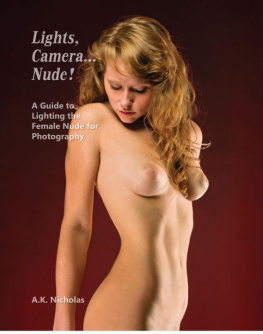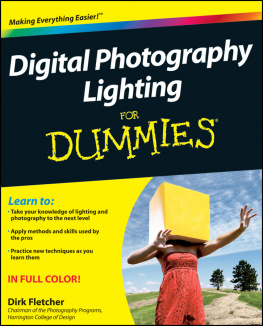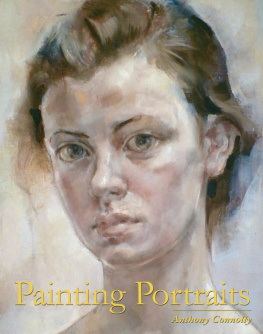This book contains material protected under Internationaland Federal Copyright Laws and Treaties. Any unauthorized reprint or use ofthis material is prohibited. No part of this book may be reproduced ortransmitted in any form or by any means, electronic or mechanical, includingphotocopying, recording, or by any information storage and retrieval system withoutexpress written permission from the author / publisher.
This publication is designed to provide accurate andauthoritative information in regard to the subject matter covered.
All information is generalized, presented forinformational purposes only and presented "as is" without warranty orguarantee of any kind.
While every effort has been made to ensure reliabilityand accuracy of the information within, all liability, negligence or otherwise,from any use, misuse or abuse of the operation of any methods, strategies,instructions or ideas contained in the material herein is the soleresponsibility of the reader.
All trademarks and brands referred to in this book arefor illustrative purposes only, are the property of their respective owners andare not affiliated with this publication in any way. Any trademarks are beingused without permission, and the publication of the trademark is not authorizedby, associated with or sponsored by the trademark owner.
No responsibility or liability is assumed by thepublisher for any injury, damage or financial loss sustained to persons orproperty from the use of this information, personal or otherwise, eitherdirectly or indirectly.
Introduction
To provide you with a comprehensive understanding ofportrait lighting it is necessary you learn about all the component parts andpieces that will permit you to do proper portrait lighting and professionalportrait photography. After learning about the parts and pieces you will learnstep by step how to use lighting to create professional portraits.
All the lighting examplesin this book will be done without the use of light modifiers such as umbrellas,soft boxes, diffusers, or reflectors with the exception of a honeycomb grid anda snoot or barn doors. Not using modifiers you will see the true effect of thelighting on your subject with the basic light before it is modified.
Even though all thelighting examples in this book can be done as easily and equally well with hardwarestore clamp lights, halogen shop lights, continuous lights, or speed lights, Iwill be using studio mono lights. The mono lights will be Alien Bee B1600s 640Wswith a standard 7" reflector. When going beyond a four light set up, sinceI only own four mono lights, I will use supplemental speed lights such as the Canon580 EX II or the Vivitar 285 HV.
In taking light meterreadings, and determining lighting ratios, it will be done using my calibrated SekonicL-308 in the incident flash metering mode.
Briefly, here is asynopsis of what you will learn chapter by chapter:
Chapter 1: You will learn about the various types oflighting equipment, and its use. Light modifiers such as soft boxes,umbrellas, reflectors, scrims, flags and gobos are beyond the scope of the bookand will not be covered.
Chapter 2: You will learn about the portrait lens,lens distortion, and the effects of using various focal length lenses. Youwill also learn what the ideal focal length lens is for classic portraits. Inconcluding chapter 2, you will learn about camera positioning and perspectivedistortion with relation to the camera position.
Chapter 3: Since the book is about portrait lighting,you will learn about the dynamics and characteristics of light and the part lightcolor and temperature play in portraiture.
Chapter 4: You will get intothe nitty-gritty of portrait lighting by learning about the quality of light,contrast, intensity and controlling light fall off and end the chapter with asolid understanding of the inverse square law.
Chapter 5: Before you canmake an exposure you need to measure the light so you are going to learn aboutthe various kinds of light meters, and how to take light meter readings.
Chapter 6: I will expandon the different metering modes including, incident, flash incident, flashreflected, continuous reflected, and reflected spot metering
Chapter 7: Now that you know how to measure the lightyou will learn how to express the physical position of a light and what thevarious lights are that you will use in portraiture such as the key, fill,hair, background and accent or kicker lights.
Chapter 7: You will delvedeeper into light, and learn about the kinds of light whether it is flat, broad,short, ghoul or silhouette with illustrated examples and diagrams.
Chapter 8: With examples,you will learn the basic kinds of lighting including; flat, broad, short,silhouette and ghoul lighting.
Chapter 9: With knowledgeof the basic kinds of lighting, you will now learn the basic lighting stylesincluding front light, open loop, closed loop, split, butterfly, RembrandtShilouette and clamshell and how to set them up and see one light examples ofeach.
Chapter 10: You will movebeyond one light and learn about multiple lights and about lighting ratios andthe relationships of one light to another as well as how to express multiplelight ratios in a standardized format. In addition, you will learn why ratiosare important and how to create a receipt book of lighting set ups as well assome tips and tricks.
Chapter 11: Using yourknowledge and understanding of multiple light nomenclature and lighting ratiosyou will exercise your knowledge and learn modified lighting styles and variouslighting setups including low key, high key, One light, two light, threelights, four lights, and five or six light setups.
Finally,When you have completed this book,and practiced what you have learned, you will have a solid foundation in basicportrait lighting and be ready to start learning about the use of lightmodifiers to enhance your lighting to the next creative level.
If you are ready, and up for the challenge, let's getstarted!
Chapter 1
Lighting Equipment
constant lights
Before I jump into talking about the different types oflight available for portrait lighting let me just say that this is not aphysics course and I'm only going to briefly touch on the kinds of light thatwe use in photography and make you familiar with some of the terms. If you areinterested in an in depth text about the actual physics of light you can belearn more in a very well written and interesting book by the title of,"Light Science & Magic" with the ISBN: 978-0-240-81225-0available on Amazon.
Constant lights are the most common lights and the leastexpensive to use when beginning in photography. Constant lights are all aroundyou. The biggest constant light available to you of course is the sun. Beyondthe sun, these are the lights that when you turn them on they stay on such asthe lamps and ceiling lights around your home. For photography, many constantlights can be purchased from your local hardware for only a few dollars or fromphotography supply outlets for hundreds of dollars.
Constant lights are primarily divided into two categories,hot lights, and cold flights. Now that may sound unusual, because everyonethinks of lights, as being hot, but hot and cold is relative. So, let us takea look at some of these hot and cold lights and see what they are.
hot lights
Hot lights are named this because they give off a lot ofheat. The heat is generated when electricity passes through the filament ofthe bulb causing it to get hot and when it reaches a high temperatures it givesoff bright light. The hotter the filament the brighter the light.





